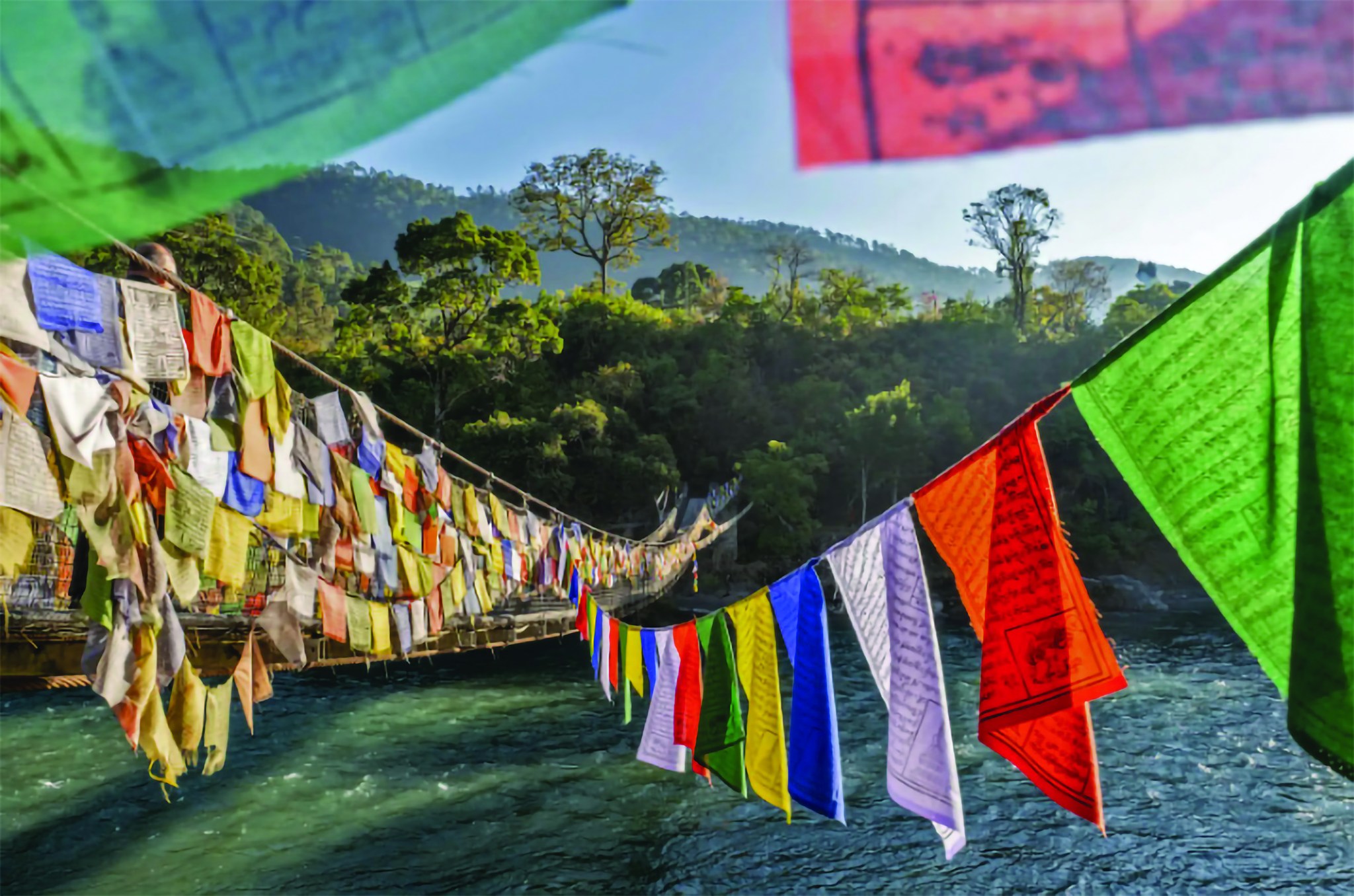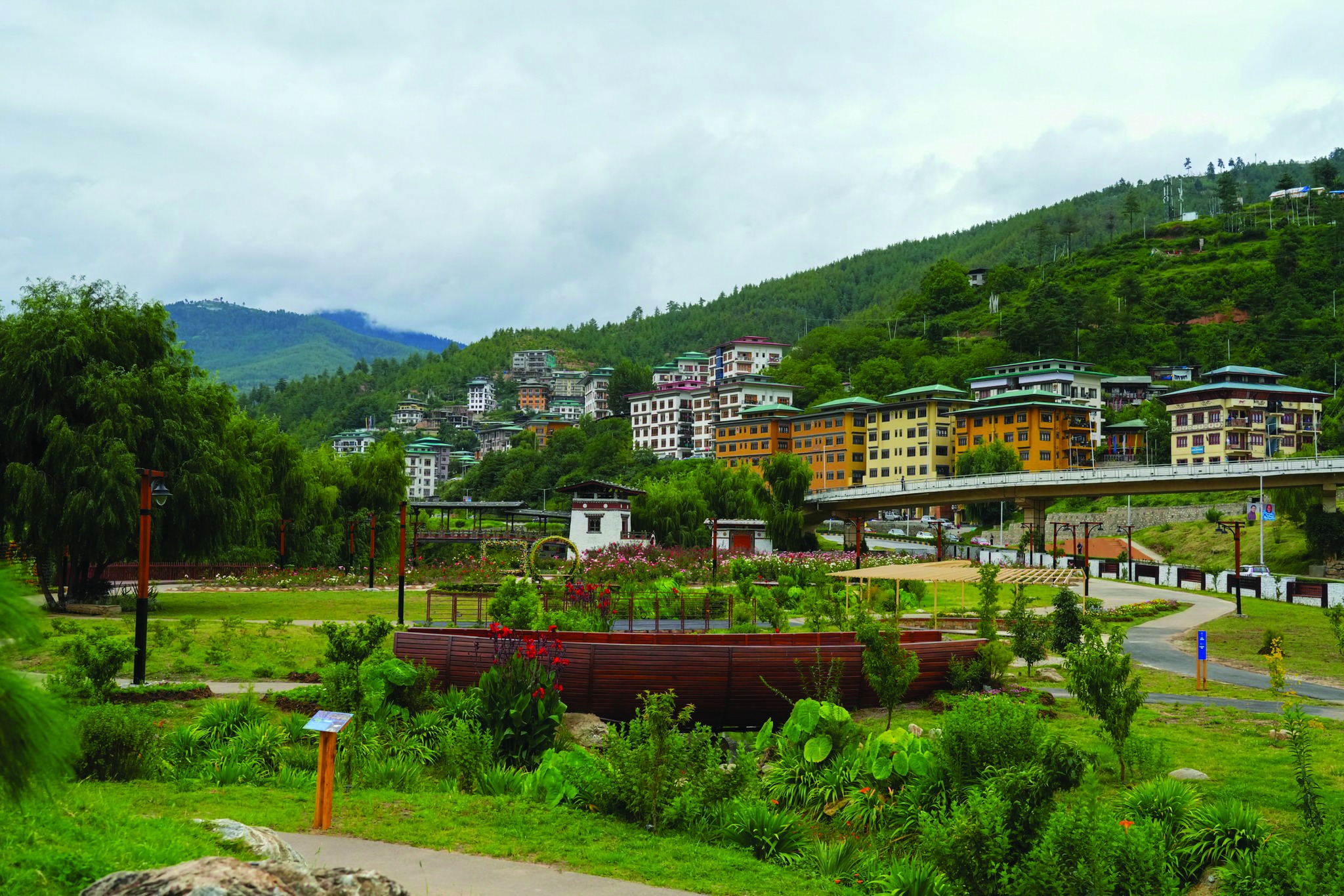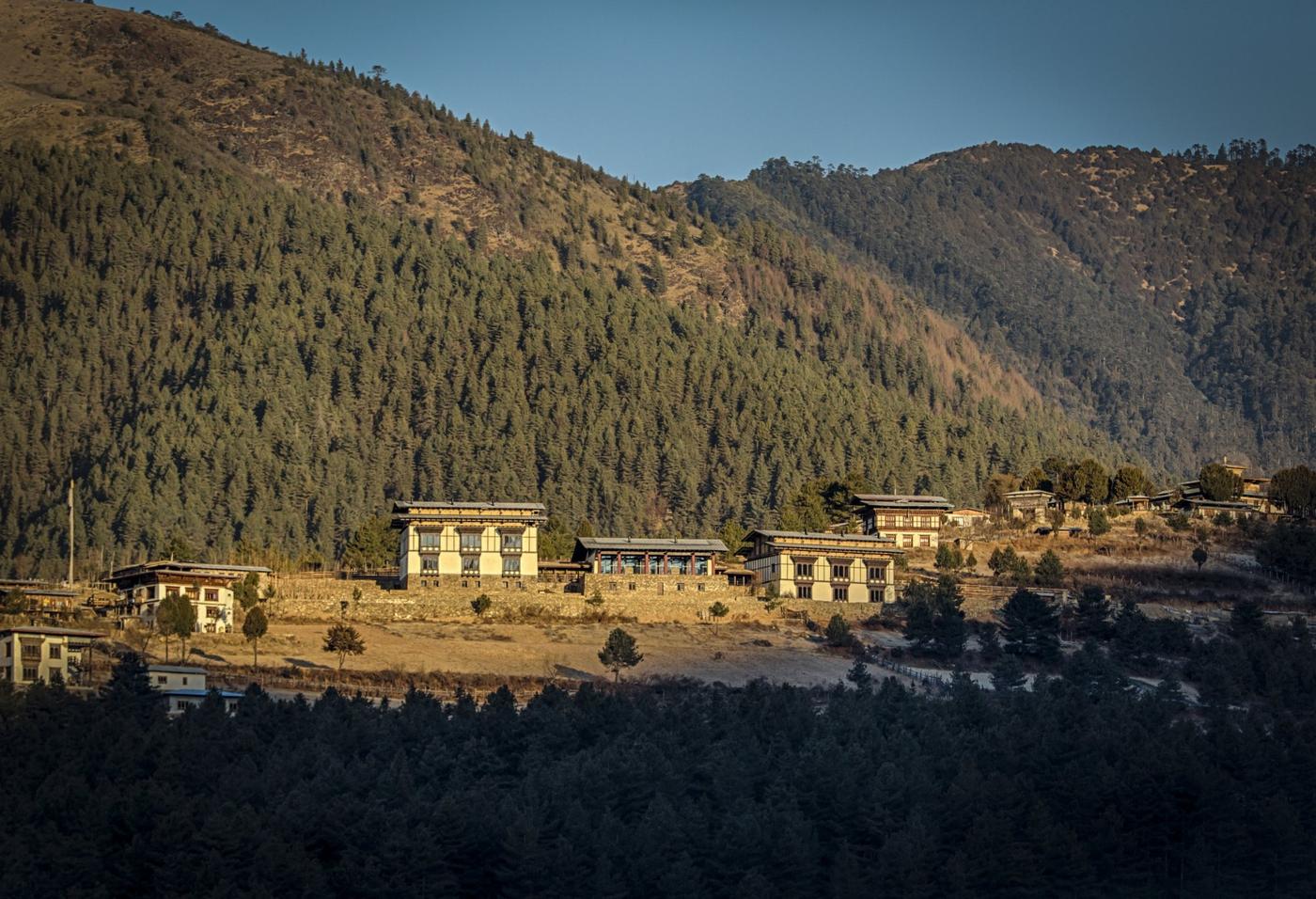Peaceful Bhutan Tour
Home / Peaceful Bhutan Tour
About
Peaceful Bhutan Tour
Escape to the tranquil kingdom of Bhutan on the Peaceful Bhutan Tour, a 12-day journey tailored to rejuvenate your mind, body, and soul. Immerse yourself in the serene beauty of the Himalayas, exploring the picturesque valleys of Paro and Thimphu, and visiting ancient monasteries and temples. Experience the warm hospitality of the Bhutanese people, and indulge in traditional cuisine and herbal remedies. With opportunities for meditation, yoga, and scenic hikes, this tour offers a unique blend of relaxation, cultural immersion, and spiritual growth, allowing you to return home refreshed, revitalized, and at peace.
- Duration: 11 Nights / 12 Days days
- Destinations Covered: Paro, Thimphu, Punakha, Trongsa, Bumthang
Itinerary
Trip day to day detail itinerary
Arrive Paro After immigration and customs formalities, you will be received by the representative of Inspire Bhutan Tours & Travels.
Then drive to Thimphu which will take you through Chunzom (confluence of Pachu- the river flowing through Paro valley & Wangchu –the river flowing through Thimphu valley). On the way, enjoy walking over a suspension bridge to view iron chains suspended over the Pa chu .This scenic site provides a good place for photography too.
After crossing Chunzom, the drive will take you along the Wangchu upto Thimphu city. On arrival at Thimphu check into your hotel.
After lunch visit the following:
- Centenary Farmers’ Market (open from Thu-Sun only): Most of the Thimphu’s population and many valley dwellers converge on the bustling weekend market, held by the side of Wangchu River. A wide range of foodstuffs and local arts and crafts are sold at the market. A visit to the market provides great photo opportunities, as well as the chance to mingle with local people. You can buy fresh fruits.
- Archery Match (National Sport of Bhutan) at Changlimithang National Stadium. Normally you will spot Bhutanese men playing archery game during weekends or public holidays. Good opportunity to interact with local people.
- Takin Preserve, which houses the national animal the Takin that is only found in Bhutan. This is an extremely rare member of the goat family. Found in herds in the very high altitudes (13,125ft and over). They live on a diet of grass and bamboo. It can weigh as much as 550 pounds. Here Takins are preserved in natural environment.
- The National Memorial Chorten (stupa) which was constructed in 1974 as a memorial for the third King of Bhutan, King Jigme Dorji Wangchuck, who is widely regarded as the father of modern Bhutan. The term ‘chorten’ literally means ' seat of faith' and Buddhists often call such monuments the 'Mind of Buddha'. Meet the elderly generation in circumambulation, especially in the evenings and mornings, at the National Memorial Chorten.
- Craft Bazaar -A one stop place to witness Bhutanese culture and buy Bhutan made art and craft product. The Bazaar in its 80 stalls covers all aspects of the traditional arts and crafts of Bhutan. At this Bazaar craftsmen and artisans from across the country display and sell their handicrafts.
In the evening explore Thimphu town on your own by taking a leisure walk through the town.
Dinner at restaurant in Thimphu town or at your hotel and overnight at a hotel in Thimphu.
After breakfast, travel to Punakha through Dochula pass at an elevation of 3140 m
At Dochula, in the clear spring sky, you can enjoy the panoramic view of the Himalayan Mountain ranges. You can take photos at the beautiful 108 chortens built on the hill by Her Majesty Ashi Dorji Wangmo Wangchuck (Queen Mother of Bhutan) for the security and well being of His Majesty, the King of Bhutan.
You will have refreshment (tea/coffee andsnacks) at Dochula Pass Cafeteria and then travel onto Punakha.
On the way, stop for traditional Bhutanese lunch at a farmhouse Lobesa village. After lunch walk through paddy fields for about 20 minutes to visit the Devine Madman’s Monastery-Chhimi Lhakhang, famously known for its fertility shrine, where one can receive a special fertility blessing.
Next walk over traditional canteliver bridge to visit the Punakha Dzong, located on the island of the Pho - Chu (male river) and the Mochu (female river).
Then walk for about 15 minutes to one of the longest suspension bridge in Bhutan spanning 350 m and perched high above the very swift Pho chu (male river). Draped with prayer flags ,the bridge connects the town of Punakha and Punakha Dzong.This bridge is mainly used by locals from the village located on the other side of the river as a shortcut to Punakha Dzong.
Dinner and overnight at a hotel in Punakha.
After breakfast visit Sangchhen Dorji Lhuendup Lhakhang and enjoy the breathtakingly beautiful view of Punakha and Wangdue valleys from there. This scenic place gives you a good opportunity for photography.
Then travel through upper Punakha valley and take a leisure walk passing through suspension bridgeand through paddy fields to the beautiful Khamsum Yuelley Namgyal Lhakhang (temple) built by Ashi Tshering Yangdon Wangchuck (the Queen Mother of Bhutan) for peace and stability in this ever-changing world. This temple is situated on the hilltop overlooking the valley below. The leisurely walk up to the temple would take about an hour. Visit the temple and also enjoy the breathtakingly beautiful view from there. The round trip hike will about 2 hours.
You can enjoy picnic lunch by the river side.
After lunch for about 30 minutes to Gaselo village.Village life here in Gaselo village is still medieval and farmers are always happy to see visitors.Experience the joy and simplicity of farming life. You may walk through farmhouses and talk to villagers.
Dinner and overnight at a hotel in Punakha.
After breakfast travel to Trongsa with lunch enroute. The drive will take you through Nobding village and dense forests of oak and blue pine trees and through the subtropical vegetation. The journey will also take you through Pele la pass (3300m). Throughout your trip you will come across the beautiful sceneries of rural Bhutan, with scattered settlements far from the road which makes for good photographing. You will also pass through open meadows, and valley of yak herders and several other villages via Chendebji Chorten ( Stupa) . On arrival at Trongsa, check into your hotel.
After refreshment visit National Museum which is housed in the Ta Dzong (watch tower). A museum in which aspects of Bhutanese culture and history are explained by beautifully objects. Documentary will be shown too which explains a great deal about Bhutanese history and history of monarchy
Then visit Trongsa Dzong, which is the most impressive dzong in Bhutan. Built in 1644 by the Shabdrung, the dzong is an architectural masterpiece.
In the evening visit Trongsa Town.
Dinner and overnight at a hotel in Trongsa.
After breakfast travel to Bumthang passing through Yotong La Pass (3400 m). Just before reaching Bumthang visit “Yathra” Weaving Centre . Yathra” Weaving Centre at Zugney Village where you will see local weavers weaving Yathra. Yathra is the name for the colorful, hand-woven woolen cloth (often with geometric designs) that is produced in this region and wool used for this type of textile is sheep wools the sheep is reared in this Bumthang Valley. Yathra is made into jackets or bags, etc.
On arrival at Bumthang enjoy traditional Bhutanese lunch at farmhouse in Bumthang. From the farmhouse walk for about 20 minutes to visit Jambay Lhakhang.Jambay Lhakhang, built in the 7th century by the King Songtsen Goempo of Tibet. In his effort to propagate Buddhism he had a plan to build a total of 108 temples in Tibet and neighboring kingdoms.
Next walk to Kurjey Lhakhang. Kujey Lhakhang (Kujey means, "Body imprint"). The temple to the right is the oldest and was built by Minjur Tempa in 1652. It was built around the cave in which Guru Rimpoche meditated and left his body imprint.
After visiting Kurjey Lhakhang take a gentle and pleasant walk crossing a suspension bridge to visit Tamshing Lhakhang. This temple is also known as Tamshing Lhendrup Chholing (Temple of the Good Message).
In the evening visit Bumthang Town.
Dinner and Overnight at a hotel in Bumthang Valley.
After breakfast travel for about an hour to the beautiful lush but remote Tang valley. Tang valley is one of the four valleys in Bumthang district. The people of this valley raise sheep and at a higher elevation yaks are raised too as the soil this valley is not so rich for cultivation.
On arrival at Tang valley, you will walk through upper villages in Tang, where we stop to chit/chat with locales and visit their homes.
Then visit the century old Ogyencholing Heritage Museum. This Museum, once a royal palace, is a nice place to take a break and enjoy a light lunch and tea before exploring the numerous artifacts and treasures inside Lunch will be served at a farmhouse near the museum.
Then travel back to Bumthang Jakar , on the way visit Mebar Tsho ( Burning lake) . This deep blue and alluring lake is one of the most sacred sites in the region and relates to the famous treasure revealer, Terton Pema Lingpa.
Dinner and Overnight at in in Bumthang
After breakfast travel to Phobjikha valley through Trongsa and Pelela Pass. Phobjikha valley is part of the beautiful Jigme Singye Wangchuck National Park (formerly known as Black Mountains National Park), one of Bhutan’s most important nature sanctuaries. Each winter it is home to a flock of 300 rare and endangered black-necked cranes. The surrounding hills and mountains are home to nomadic shepherds and yak-herders. This is one of the most remote and untouched regions in Bhutan. Lunch will be served enroute.
On arrival at Phobjikha check into hotel. You will have leisure time in the evening.
Dinner and Overnight at a hotel in Phobjikha Valley.
After breakfast visit Gangtey Monastery and take a short hike from Gangtey Monastery along the Gangtey Nature Trail enjoying spectacular view of several villages in Phobjikha valley. You will end your hike at Black Necked crane center. This hike will take about 30 minutes.
Then visit the Black necked crane center. The cranes will start immigrating to this area by Novermber and by March cranes will be flown back but few injured & rescued cranes will be left behind which you can see. From black crane center take short walk through fields and farmhouses where you can have free interaction with local people and visit their houses.
You will have traditional Bhutanese lunch at one of the farmhouses.
After lunch travel to Thimphu through Wangdue Phodrang and Dochula pass.
On arrival at Thimphu check into your hotel
Dinner and overnight a hotel in Thimphu.
After breakfast travel to Paro and visit Dzongdrakha Olhakhang-often called the mini- Taktsang, Dzongdrakha temples are built on the cliffs above Bondey village. Take a short walk to the temple for about 15 minutes. Legend says one of the temples is built around a levitating monument. Folks built a stronger temple around this monument with the hope that the levitating monument does not fly away into the sky.
After lunch drive to parking lot near Paro Dzong and walk over traditional Cantilever Rimpung bridge which is oldest bridge in Bhutan to visit Paro dzong Paro Rinpung Dzong (fortress), built in 1645 to defend the valley against Tibetan invaders. The Dzong is now being used as an administration center and school for monks. From the Dzong you will walk back down to Rimpung Bridge.
Also visit National Museum, housed in the Ta Dzong (watchtower). Here is an intriguing collection of artefacts which provide you with a wonderful insight to the rich culture and heritage of the Kingdom of Bhutan
In the evening explore Paro town on your own.
Dinner and overnight at hotel in Paro.
After breakfast, travel for about 20 minutes to the base of Taktsang Monastery and then hike up to Taktsang Monastery, also known as ‘Tiger’s Nest’. The walk up to the viewpoint will take about 1 – 1 ½ hrs depending on your fitness and from View Point you will enjoy a spectacular view of the monastery clinging to the side of the cliff. Stop for refreshment at the View Point Cafeteria. Take photos with great view of Taktsang behind you.
Then walk further up to the monastery which will take about 1 hour. After visiting the monastery, walk downhill back to the road on the way stop for lunch at the view point cafeteria and then walk further downhill to the road point.
On the way visit Kyichu temple, one of the 108 temples built in the 7th century by the Tibetan King Songsten Gampo.
Then visit to a farmhouse offers a good glimpse into the lifestyle of a farmer. You can have traditional Bhutanese lunch and also you can try your hand at archery game using traditional bow and arrow made out of bamboo.
In the evening relax in the Traditional Bhutanese Hotstone bath at a farmhouse in Paro valley.
Tradtional Hotstone bath: A traditional Bhutan hot stone bath uses river rocks that therapists place in water where they crack and steam, releasing key minerals and relieving deep-set aches.
You will also see around inside of the traditional Bhutanese house.
You will enjoy traditional Bhutanese dinner with the family members of the house.
Overnight at the same hotel in Paro.
In the morning, you will be transferred to Paro Airport for your flight out of Bhutan, marking the end of your enriching journey.
INCLUSIONS
1. Sustainable Development Fee (SDF) of USD 100 per person per night
2. One-time visa fee of USD 40 per person
3. Accommodation in 3-star hotels and homestays with double or twin sharing and private bathroom
4. Full board meals including breakfast, lunch, and dinner
5. Entry to all listed attractions as per the itinerary
6. Air-conditioned vehicle for all excursions and transfers
7. Services of a professional English-speaking guide
EXCLUSIONS
1. International and domestic flights
2. Beverages, tips, travel insurance, and personal expenses
3. Room upgrades to 4-star or 5-star hotels and additional room supplements
4. Single supplement of USD 35 per night for groups of three or more when extra rooms are required
5. Additional services can be arranged as per preference.
BOOK NOW WITH US
Error: Contact form not found.




